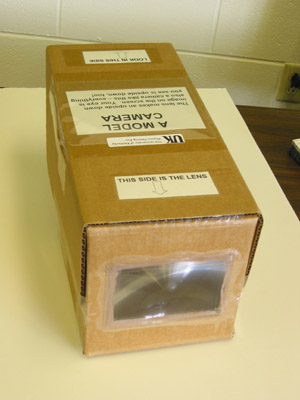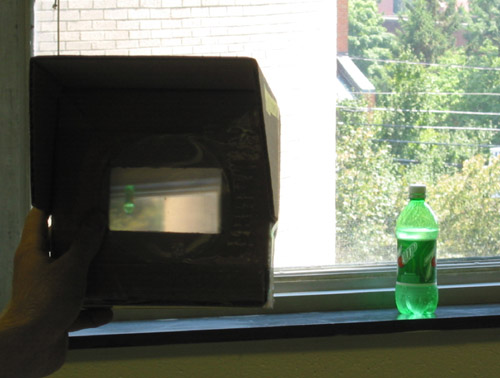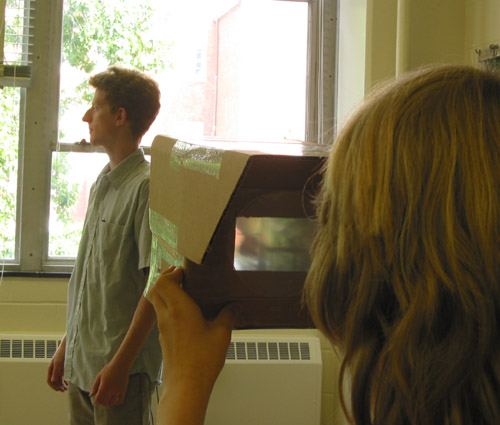
Instructions for:
MODEL CAMERA
The Model Camera doesn’t take any pictures. Instead, it makes the workings of the camera much more visible. This simple device involves a box, a translucent plastic screen, and a special lens, called a Fresnel lens, which is made of a flat sheet of clear plastic, with molded ridges in a circular pattern. These lenses are much cheaper to produce than traditional glass lenses, are lighter, more durable, and safer for use with children.
For best results, the camera should be held at arms-length from the eye, and should be pointed at well-lit objects in a normal classroom-sized room (as the camera will not focus on far away objects). Do not point the camera towards the sun: this will quickly ruin the translucent screen.
The lens included with the Model Camera has a focal length of around nine inches. This means that light from the sun, or another far away source, will focus into a single point on a piece of paper or screen held nine inches away from the lens. This type of lens is called a converging lens, meaning that the light rays that pass through it are bent inwards towards a central axis. Other objects, such as people, trees, or windows, at considerably closer distances, seen through the lens, will form inverted (upside down) images on a screen held at just beyond the focal length.


These diagrams trace light rays from objects, through the lens, and finally onto a screen.
As noted on the Camera, this demonstration also accurately models the human eye. The eye works in exactly the same way: the eye’s surface provides a natural lens which focuses light through the spherical eyeball, and forms an image on the retina (the surface of the back of the eye). Diagrams are included here:
Questions for Students / Items of Interest:
- Typically, well illuminated objects at a distance of eight to twelve feet form the best images on the screen. Objects that are too near, such as a hand held in front of the camera, do not focus on the screen, and form no discernible image.
Copyright 2004 Straley/Pinney - The University of Kentucky Physics Petting Zoo